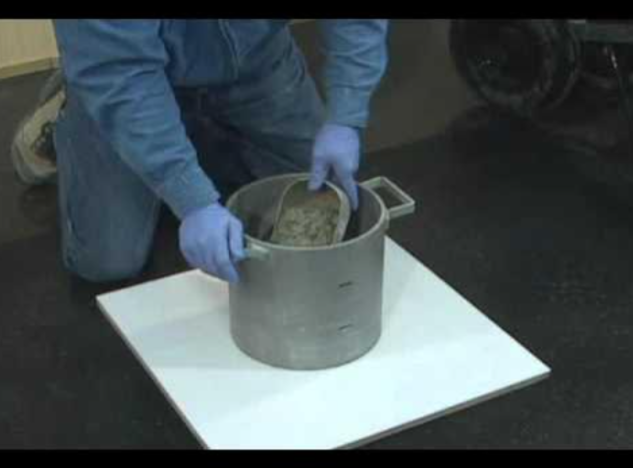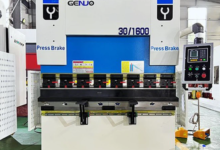How to Perform a Fresh Concrete Density Test in the Field

Fresh concrete density testing represents one of the most fundamental quality control procedures in construction projects worldwide. This critical assessment method provides construction professionals with essential data about the mass per unit volume of freshly mixed concrete before it begins to set and harden. The density of fresh concrete serves as a reliable indicator of the mixture’s composition, uniformity, and potential strength characteristics.
The field testing of fresh concrete density has evolved significantly over the decades, transforming from rudimentary measurement techniques to standardized procedures that ensure consistent and reliable results across different project sites. Modern construction standards require precise documentation of concrete properties, making density testing an indispensable part of quality assurance protocols.
Understanding how to properly perform fresh concrete density tests in field conditions requires comprehensive knowledge of testing procedures, equipment handling, and result interpretation. This testing method directly impacts project success, structural integrity, and long-term durability of concrete structures. Professional construction teams rely on accurate density measurements to verify that concrete mixtures meet specified requirements and perform consistently throughout the construction process.
Understanding the Importance of Density Testing
Fresh concrete density test of concrete serves multiple critical functions in construction quality control programs. The primary purpose involves verifying that the concrete mixture contains the correct proportions of cement, aggregates, water, and admixtures as specified in the mix design. Variations in density often indicate problems with batching accuracy, mixing procedures, or material consistency that could compromise the final concrete properties.
Density measurements provide immediate feedback about concrete uniformity, allowing construction teams to identify and address potential issues before placement and finishing operations begin. This proactive approach prevents costly remedial work and ensures that structural elements meet design specifications. The test results also help establish correlations between fresh concrete properties and hardened concrete strength, enabling better prediction of long-term performance characteristics.
Construction specifications typically include density requirements that must be satisfied before concrete placement can proceed. These requirements reflect the relationship between concrete density and other important properties such as workability, strength development, and durability. Meeting specified density ranges ensures that the concrete will perform as intended throughout the structure’s service life.
The economic implications of density testing extend beyond immediate quality control benefits. Accurate density measurements help optimize concrete mixtures, reducing material waste and improving cost efficiency. Construction teams can use density data to fine-tune mix proportions, adjust batching procedures, and maintain consistent concrete quality across large projects.
Equipment and Materials Required
Performing accurate fresh concrete density tests requires specific equipment and materials that must be properly calibrated and maintained. The primary testing apparatus includes a cylindrical metal container with known volume, typically measuring 0.25 cubic feet or approximately 7 liters. This container must be constructed from durable materials that resist corrosion and maintain dimensional stability under field conditions.
A precision balance capable of measuring to the nearest gram becomes essential for obtaining accurate mass measurements. The balance must have sufficient capacity to weigh the filled container plus concrete, typically requiring a range of at least 15 to 20 kilograms. Modern digital balances provide the accuracy and convenience necessary for field testing applications.
Compaction equipment plays a crucial role in achieving consistent test results. A standard tamping rod, measuring approximately 16 inches in length with a rounded tip, enables proper consolidation of concrete samples within the testing container. Some testing procedures may require mechanical vibration equipment to achieve adequate compaction, particularly for low-slump concrete mixtures.
Additional tools include a straightedge for leveling the concrete surface, protective equipment for personnel safety, and calibration weights for verifying balance accuracy. Sample collection tools such as scoops or buckets facilitate obtaining representative concrete samples from delivery vehicles or mixing equipment.
Preparation for the Test
Proper preparation forms the foundation of accurate fresh concrete density testing. The testing area must provide a stable, level surface that protects the precision balance from vibrations, wind, and temperature fluctuations. Construction sites often present challenging environmental conditions that require careful consideration and preparation to maintain testing accuracy.
Equipment calibration represents a critical preparatory step that directly impacts result reliability. The precision balance must be zeroed and verified using certified calibration weights before each testing session. The testing container should be cleaned thoroughly and inspected for damage, dents, or dimensional changes that could affect volume accuracy.
Personnel preparation involves reviewing testing procedures, safety protocols, and documentation requirements. Team members performing density tests must understand the importance of following standardized procedures consistently to ensure reliable and repeatable results. Proper training helps prevent common errors that could compromise test accuracy or safety.
Environmental conditions require careful monitoring and documentation as part of the preparation process. Temperature, humidity, and wind conditions can influence test results and must be recorded along with other test data. Extreme environmental conditions may require modifications to testing procedures or postponement of testing activities.
Step-by-Step Testing Procedure
The fresh concrete density testing procedure begins with obtaining a representative sample from the concrete mixture. This sample must accurately reflect the overall concrete composition and should be collected following established sampling protocols. The sampling location, timing, and method significantly influence the representativeness of the test specimen.
Initial sample preparation involves ensuring adequate mixing and homogeneity of the concrete specimen. Any segregation or bleeding that occurs during sample collection must be addressed through gentle remixing to restore uniformity. The sample size should exceed the amount required for testing to allow for proper specimen preparation and handling.
Container preparation requires applying a thin layer of lubricant to the interior surfaces to prevent concrete adhesion and facilitate easy removal after testing. The empty container must be weighed accurately and this baseline measurement recorded for later calculations. All weighing operations should be performed with the balance properly zeroed and protected from environmental influences.
Filling the testing container follows a systematic approach designed to minimize air voids and ensure uniform concrete distribution. The concrete should be placed in layers, with each layer receiving appropriate compaction using the tamping rod or mechanical vibration equipment. The compaction effort must be sufficient to eliminate entrapped air without causing segregation or excessive bleeding.
Surface finishing involves carefully leveling the top surface of the concrete using a straightedge in a sawing motion. Excess concrete must be removed to create a smooth, level surface that coincides exactly with the container rim. This step requires precision to ensure accurate volume measurement and consistent test results.
The final weighing operation determines the total mass of the container plus concrete specimen. This measurement must be recorded immediately to prevent changes due to moisture loss or continued hydration. All weighing should be performed quickly but carefully to maintain accuracy while minimizing exposure to environmental factors.
Recording and Calculating Results
Accurate data recording forms an essential component of the fresh concrete density testing process. All measurements must be documented clearly and completely, including environmental conditions, sample identification, and timing information. Proper documentation ensures traceability and enables verification of test procedures and results.
The density calculation involves determining the net mass of the concrete specimen by subtracting the container mass from the total measured mass. This net mass, when divided by the known container volume, yields the concrete density in appropriate units such as pounds per cubic foot or kilograms per cubic meter.
Calculation accuracy depends on precise measurement of both mass and volume parameters. Any uncertainties in container volume or balance readings directly affect the calculated density values. Modern testing standards specify acceptable tolerances for equipment accuracy and measurement precision to ensure reliable results.
Multiple calculations may be performed when testing procedures require replicate specimens or when results appear questionable. Statistical analysis of multiple measurements helps identify potential errors and establishes confidence in the reported values. Consistent results from replicate tests validate the testing procedure and confirm measurement accuracy.
Interpreting Test Results
Fresh concrete density results require careful interpretation within the context of project specifications and mixture design parameters. Typical concrete densities range from approximately 140 to 150 pounds per cubic foot for normal weight concrete, with variations depending on aggregate type, cement content, and admixture usage.
Comparison with specified density ranges helps determine acceptance or rejection of concrete batches. Results falling outside acceptable limits may indicate batching errors, material quality issues, or procedural problems that require investigation and correction. Understanding the relationship between density variations and underlying causes enables appropriate corrective actions.
Density measurements provide insights into concrete uniformity and consistency across different batches or delivery trucks. Significant variations between successive tests may indicate problems with mixing procedures, material handling, or quality control systems. Trend analysis helps identify systematic issues before they impact large quantities of concrete.
The relationship between fresh concrete density and hardened concrete properties enables prediction of strength development and durability characteristics. Historical data correlations help construction teams anticipate concrete performance based on density measurements, supporting informed decision-making throughout the construction process.
Common Challenges and Troubleshooting
Field testing environments present numerous challenges that can compromise density test accuracy and reliability. Environmental factors such as temperature extremes, high winds, and precipitation require special precautions to maintain testing precision. Construction site conditions often demand creative solutions to protect equipment and ensure consistent results.
Equipment-related challenges include balance instability, container damage, and calibration drift that can introduce measurement errors. Regular maintenance and calibration verification help identify and address equipment issues before they affect test results. Backup equipment availability ensures testing continuity when primary instruments require service or replacement.
Sample-related problems encompass segregation, bleeding, rapid setting, and contamination that can compromise test specimen integrity. Understanding these issues and implementing appropriate preventive measures helps maintain sample quality and test accuracy. Proper sampling techniques and timing minimize exposure to factors that could alter concrete properties.
Procedural challenges arise from inadequate training, time pressures, and communication gaps between testing personnel and construction crews. Standardized procedures and regular training help maintain consistency and accuracy across different testing personnel and project phases. Clear communication protocols ensure that testing requirements are understood and followed throughout the construction process.
Quality Control Measures
Implementing comprehensive quality control measures ensures the reliability and accuracy of fresh concrete density testing programs. Regular calibration verification using certified reference standards maintains measurement traceability and identifies potential equipment drift before it affects test results. Documentation of calibration activities provides evidence of testing system integrity.
Personnel qualification and training programs establish competency standards for testing personnel and ensure consistent application of testing procedures. Regular proficiency testing and skill assessments help maintain high standards of testing quality. Certification programs provide formal recognition of testing competence and professional development.
Systematic record keeping enables tracking of test results, equipment performance, and procedural compliance over time. Database systems facilitate analysis of testing trends, identification of recurring issues, and verification of quality control effectiveness. Regular review of quality control data supports continuous improvement initiatives.
Inter-laboratory comparison programs provide external validation of testing procedures and results. Participation in proficiency testing programs helps identify potential biases or systematic errors in testing systems. Regular comparison with other testing facilities supports confidence in result accuracy and reliability.
Safety Considerations
Fresh concrete density testing involves potential hazards that require appropriate safety measures and protective equipment. Direct contact with fresh concrete can cause chemical burns due to the alkaline nature of cement-based materials. Protective gloves, safety glasses, and appropriate clothing help prevent skin and eye contact with concrete materials.
Heavy lifting associated with filled testing containers presents ergonomic hazards that require proper lifting techniques and mechanical aids when necessary. Testing containers filled with concrete can weigh 20 kilograms or more, requiring careful handling to prevent back injuries or equipment damage. Team lifting or mechanical assistance may be necessary for safe handling.
Environmental hazards on construction sites include uneven surfaces, moving equipment, and overhead hazards that require constant awareness and appropriate precautions. Testing personnel must be trained in site safety protocols and equipped with appropriate personal protective equipment. Communication with site personnel helps coordinate testing activities safely within active construction zones.
Chemical exposure risks extend beyond direct concrete contact to include potential exposure to admixtures, curing compounds, and other construction chemicals. Understanding material safety data sheets and implementing appropriate handling procedures helps minimize exposure risks. Emergency procedures and first aid supplies should be readily available during testing activities.
Comparison with Other Testing Methods
Fresh concrete density testing represents one of several methods available for evaluating concrete quality and consistency. Slump testing provides information about concrete workability but does not directly indicate density or mixture proportions. Air content testing specifically measures entrained air levels but requires specialized equipment and procedures.
Temperature measurement offers insights into concrete hydration and potential setting issues but does not provide direct information about mixture composition or density. Combining multiple test methods provides comprehensive evaluation of fresh concrete properties and helps identify potential issues more effectively than single-parameter testing.
Non-destructive testing methods such as ultrasonic pulse velocity can provide information about concrete uniformity and potential strength characteristics. However, these methods typically require more sophisticated equipment and may not be practical for routine field testing applications. The simplicity and direct nature of density testing make it particularly valuable for field quality control programs.
Rapid testing methods using nuclear gauges or other technologies can provide quick density measurements but may require special licensing, training, and safety procedures. Traditional volumetric density testing remains the standard method for most construction applications due to its accuracy, simplicity, and wide acceptance in industry standards.
Best Practices for Accurate Results
Achieving consistently accurate fresh concrete density test results requires adherence to established best practices and attention to procedural details. Timing of sample collection significantly impacts test accuracy, with samples collected too early or too late potentially showing different characteristics than the bulk concrete mixture.
Environmental protection of testing equipment and specimens helps maintain accuracy under challenging field conditions. Simple enclosures or windscreens can significantly improve balance stability and measurement precision. Temperature control may be necessary in extreme environmental conditions to prevent premature setting or excessive moisture loss.
Standardization of procedures across all testing personnel ensures consistent results and eliminates variability associated with different techniques or interpretations. Written procedures, regular training, and periodic observation help maintain procedural consistency. Documentation of any deviations from standard procedures enables proper interpretation of results.
Regular validation of testing procedures through replicate testing, comparison with reference methods, or participation in inter-laboratory programs helps maintain confidence in result accuracy. Systematic review of testing data can identify trends or patterns that suggest procedural issues or equipment problems requiring attention.
Read Also: Choosing the Right Video Editing Company for Your Photography Business
Documentation and Reporting
Comprehensive documentation of fresh concrete density testing activities provides essential records for quality control, dispute resolution, and performance evaluation. Test reports should include all relevant information about testing conditions, procedures, and results in sufficient detail to enable result verification and interpretation by other professionals.
Standardized reporting formats facilitate consistent documentation and improve communication between testing personnel, construction teams, and project stakeholders. Electronic data management systems can streamline documentation processes while ensuring data integrity and accessibility. Automated calculation and reporting features help reduce transcription errors and improve efficiency.
Legal and contractual requirements often specify documentation standards and retention periods for construction testing records. Understanding these requirements and implementing appropriate record management systems helps ensure compliance and protects project stakeholders. Regular backup and archival procedures protect critical testing data from loss or damage.
Integration with project management systems enables correlation of testing data with construction activities, material deliveries, and quality control events. This integration supports comprehensive quality management and facilitates analysis of testing effectiveness and construction performance.
Certified Material Testing Products (Certified MTP) is a leading supplier of construction materials testing equipment and laboratory supplies in the United States. They offer a comprehensive range of products for testing concrete, asphalt, aggregate, soil, and cement, catering to both field and laboratory applications But no matter whether they are preferred or not, the whole idea behind these tools is similar: getting a polished, shiny, and permanent effect. New to stucco or a seasoned pro, investing in good tools and learning the nuances of their use is what will get you started perfecting your craft.
Conclusion
Fresh concrete density testing represents a fundamental aspect of construction quality control that directly impacts project success and structural performance. Proper execution of density testing procedures requires understanding of testing principles, careful attention to procedural details, and commitment to accuracy and consistency. The investment in proper testing equipment, personnel training, and quality control systems pays dividends through improved concrete quality and reduced construction risks.
The field environment presents unique challenges that demand adaptive approaches while maintaining adherence to established testing standards. Success in fresh concrete density testing comes from combining technical knowledge with practical experience and continuous attention to quality improvement. As construction technology continues to evolve, density testing remains a reliable and essential tool for ensuring concrete quality and performance.
Modern construction projects benefit from integrated quality management approaches that combine density testing with other evaluation methods and advanced data management systems. This comprehensive approach enables proactive quality control and supports informed decision-making throughout the construction process. The fundamental principles of accurate measurement, proper documentation, and careful interpretation remain essential regardless of technological advances.
Professional development and continuous learning help testing personnel stay current with evolving standards, technologies, and best practices. The construction industry’s commitment to quality and safety depends on competent testing professionals who understand the importance of their role in ensuring structural integrity and public safety.
Frequently Asked Questions (FAQ)
Q: How often should fresh concrete density tests be performed during construction?
A: The frequency of density testing depends on project specifications, concrete volume, and quality control requirements. Typically, density tests should be performed for each concrete batch or at regular intervals as specified in project documents. Critical structural elements may require more frequent testing, while routine applications might allow less frequent sampling. Consult project specifications and applicable standards for specific requirements.
Q: What is the acceptable range for fresh concrete density results?
A: Acceptable density ranges vary depending on concrete mixture design and project specifications. Normal weight concrete typically ranges from 140 to 150 pounds per cubic foot (2240 to 2400 kg/m³), while lightweight concrete may range from 90 to 120 pounds per cubic foot (1440 to 1920 kg/m³). Project specifications should define acceptable ranges based on mixture design parameters and performance requirements.
Q: Can environmental conditions affect fresh concrete density test results?
A: Yes, environmental conditions significantly impact density test accuracy. High temperatures can cause rapid moisture loss, while cold temperatures may affect concrete workability and setting characteristics. Wind and precipitation can interfere with balance operation and sample integrity. Testing should be performed in controlled conditions whenever possible, with environmental factors documented as part of test records.
Q: What should be done if density test results fall outside acceptable limits?
A: Results outside acceptable limits require immediate investigation to identify the underlying cause. Potential issues include batching errors, material quality problems, or testing procedure deviations. The concrete batch may need to be rejected or modified depending on the severity of the deviation and project requirements. Corrective actions should address the root cause to prevent recurrence.
Q: How accurate must the testing equipment be for reliable results?
A: Testing equipment accuracy directly affects result reliability and must meet or exceed standards specified in applicable testing procedures. Balances should be accurate to at least 0.1% of the measured load, while container volumes must be known within 0.1%. Regular calibration verification ensures continued accuracy and compliance with testing standards.
Q: Is special training required to perform fresh concrete density tests?
A: While basic density testing procedures are relatively straightforward, proper training ensures consistent and accurate results. Training should cover testing procedures, equipment operation, safety requirements, and result interpretation. Many organizations require certification for testing personnel, particularly for projects with stringent quality control requirements.
Q: Can density tests predict hardened concrete strength?
A: Density tests provide indirect information about concrete composition and uniformity that correlates with strength development. However, direct strength prediction requires empirical relationships established through testing of specific mixture designs. Density results are most valuable when combined with other fresh concrete tests and historical performance data.
Q: What are the most common errors in fresh concrete density testing?
A: Common errors include inadequate sample preparation, improper compaction procedures, inaccurate weighing, and environmental interference with balance operation. Procedural shortcuts, equipment calibration drift, and inadequate personnel training also contribute to testing errors. Following standardized procedures and maintaining equipment properly help minimize these issues.
Q: How long does it take to perform a complete density test?
A: A typical fresh concrete density test can be completed in 10 to 15 minutes under normal conditions. This includes sample preparation, container filling and compaction, weighing operations, and result calculation. NFC Business Card Additional time may be required for equipment setup, calibration verification, and documentation activities.
Q: Are there alternatives to traditional volumetric density testing methods?
A: Several alternative methods exist, including nuclear density gauges, ultrasonic testing, and automated batching system monitoring. However, traditional volumetric testing remains the standard method due to its accuracy, simplicity, and wide acceptance in industry standards. Alternative methods may be useful for specific applications but typically require specialized equipment and training.







